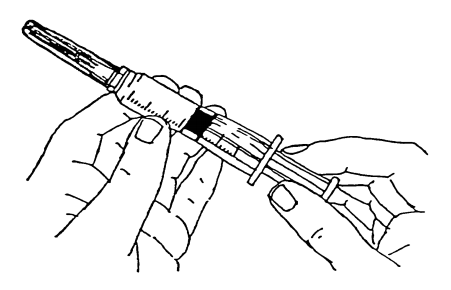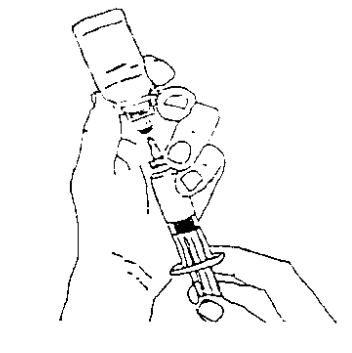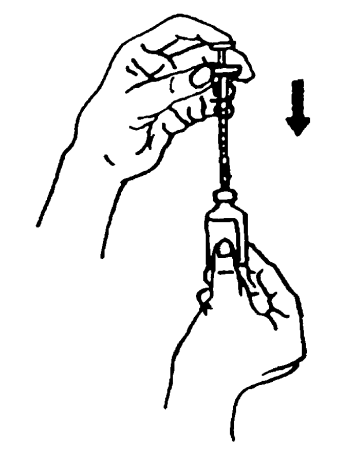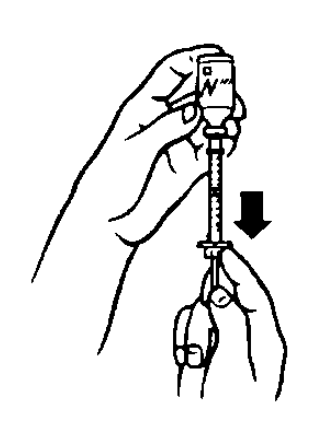IV medicines - preparing at home
Your child needs to receive IV medicines at home. There are several ways to give IV medicines. The home care nurse will teach you how to do it for your child.
To prepare the medicines, follow the checked instructions. After preparing them, see the education sheet on how to give them.
Preventing infection
It is very important to prevent infection. An infection might require removal of the IV catheter. The nurse will show you how to keep your supplies sterile, so that no bacteria will enter the catheter and cause an infection.
Cleanliness is a must! Before each procedure in this education sheet, follow these steps:
- Prepare a clean work area by cleaning a solid surface with a disinfectant cleanser (such as Lysol® or another brand).
- Wash your hands well, using one of the following methods:
- Use an alcohol-based hand sanitizer (Purell® or another brand) according to directions.
- If alcohol-based hand sanitizer is not available, wash your hands with antibacterial soap for at least 15 seconds, rubbing all surfaces briskly, including between your fingers and under your fingernails. Use a paper towel or clean hand towel to dry your hands, and then use the towel to turn off the faucet.
- Before each time you insert a needle into a vial, put on non-sterile gloves and scrub the stopper for 30 seconds with a fresh alcohol wipe, using friction. Let it dry. Do not fan or blow on it.
___ Drawing up IV medicines
- Prepare the work area.
- Wash your hands well.
- Gather supplies:
- alcohol wipes
- syringe, size:
- vial adapter
- vial of medicine
- non-sterile gloves
- Put supplies in order of use on the work surface.
- Check the labels on the vials to make sure you have the right medicine in the right strength. If you have a different medicine or different strength, do not give it. Call the pharmacy or home care nurse.
- A medicine is good until the expiration date. Throw it away sooner if you see sediment in it or if you question its cleanliness.
- The first time you use a vial, snap off the plastic cap. Do not remove the stopper.
- Open packages without touching anything inside.
- Scrub the stopper of the medicine vial with an alcohol wipe for 30 seconds and let it dry.
- Insert the pointed end of the vial adapter into the stopper of the medicine vial.
- The vial adapter is to stay on the vial. Each time you open a new bottle of medicine, use a new vial adapter.
- Scrub the top of the vial adapter with a fresh alcohol wipe for 30 seconds and let it dry. After cleaning, be careful not to touch the adapter with your fingers. If you do touch it, scrub it again with a fresh alcohol wipe.
- Take the cap off of the syringe.
- Draw air into the syringe by pulling the plunger back to the line that marks the dose of medicine you need to give.

- Twist the syringe tip into the top of the vial adapter and push the air into the bottle.
- Turn the bottle upside down. Pull back on the plunger to let the medicine flow into the syringe until it reaches the amount to be given.
- Check the syringe for air bubbles. To remove an air bubble, tap the syringe to make the bubble go to the top. Squirt the bubble into the vial. Measure the dose again.

- Replace syringe tip cover. Label the syringe if you are drawing up more than one kind of medicine.
___ Mixing vitamins or other IV medicines
- Prepare the work area.
- Wash your hands well.
- Gather supplies:
- alcohol wipes
- syringe, size:
- needle, size:
- vial of medicine
- vial of diluent (sterile water or normal saline)
- non-sterile gloves
- Put packages in order of use on the work surface.
- Check the labels on the vials of medicine and diluent to be sure you have the correct ones. If you have a different medicine or diluent, do not give it. Call the home care nurse.
- A medicine is good until the expiration date. Throw it away sooner if you see sediment in it or if you question its cleanliness.
- Open packages without touching anything inside.
- Remove the plastic caps from the medicine and diluent vials.
- Scrub the stoppers of both vials for 30 seconds, using a fresh alcohol wipe for each. Let them dry. After cleaning, be careful not to touch the stopper with your fingers. If you do touch it, scrub it again with a fresh alcohol wipe.
- Put the needle on the syringe using sterile technique.
- Draw air into the syringe by pulling the plunger back to the line that marks the dose of diluent you need to measure.
- Put the needle through the stopper of the diluent bottle and push the air into the bottle.

- Turn the bottle upside down and draw back on the plunger to pull the correct amount of diluent into the syringe.

- Remove any air bubbles (see step 15 under "Drawing up IV medicines").
- Push the diluent into the medicine vial.
- Remove the syringe and recap the needle, being careful not to touch it with anything. Note: It is safe to recap the needle because it has not been used or contaminated with blood or body fluids.
- Gently shake or roll the vial to mix. Check to be sure all the medicine is mixed in.
- Scrub the stopper of the medicine vial with a new alcohol wipe for 30 seconds and let it dry.
- Draw air into the syringe equal to the amount of medicine you are to give.
- Put the needle through the stopper of the vial and push the air into the vial.
- Turn the bottle upside down and draw back on the plunger to pull the amount of medicine you are to give into the syringe. If you are to give the whole vial, pull the needle down so it stays in the liquid and you can pull all of the medicine into the syringe.
- Remove any air bubbles (see step 15 under "Drawing up IV medicines").
- Recap the needle and set the syringe aside until you are ready to use it. Be sure to label the syringe if you are drawing up more than one kind of medicine.
Questions?
If you have any questions, please call the doctor, pharmacist, or home care nurse.
Children's Hospitals and Clinics of Minnesota
Last reviewed by Home Care 8/2015
9/2013 © Copyright
This page is not specific to your child, but provides general information on the topic above. If you have any questions, please call your clinic. For more reading material about this and other health topics, please call or visit Children's Minnesota Family Resource Center library, or visit www.childrensmn.org/educationmaterials.
© 2024 Children's Minnesota
